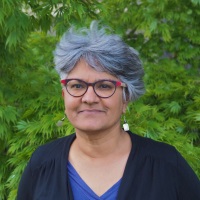Jaisri Lingappa

Jaisri Lingappa received a B.A. with Distinction from Swarthmore College, an M.D. from the University of Massachusetts, and a Ph.D. from Harvard University, where her dissertation studies were in the laboratory of Dr. Richard Zigmond. She did an internship and residency in internal medicine and an infectious disease fellowship at the University of California at San Francisco (UCSF). As a post-doctoral fellow at UCSF, she worked with Drs. Vishu Lingappa, Don Ganem, and William Welch to develop a cell-free system for the assembly of hepatitis B virus capsids. Subsequently, she received independent funding to study how the immature HIV-1 capsid assembles in cells. Using cell-free systems as well as infected cells, her group has demonstrated that HIV-1 and other primate lentiviruses assemble their immature capsids via a host-catalyzed, energy-dependent pathway that requires the cellular enzymes ABCE1 (formerly called HP68 or RNase L inhibitor) and DDX6.
In 1999, Dr. Lingappa joined the faculty at the University of Washington (UW). She is currently a Professor in the UW Dept. of Global Health, with adjunct appointments in the UW Dept. of Medicine and the UW Dept. of Microbiology. She is also affiliated with the UW Pathobiology Ph.D. program and the UW Molecular and Cellular Biology Ph.D. program. Dr. Lingappa has received three teaching awards at UW, including the 2015 School of Public Health Excellence Award for Outstanding Faculty Teaching for her role in a new undergraduate course called “Science in Public Health”.
Current research in Dr. Lingappa’s laboratory is focused on how viruses use cellular machinery to assemble new viruses in infected cells. Her lab’s latest findings show that HIV-1 uses a highly conserved protein-protein interaction to co-opt cellular complexes called RNA granules, which become the “machines” that assemble new viruses containing viral genomes. Dr. Lingappa also co-founded Prosetta Biosciences, which has identified novel drugs that target the “virus assembly machines” – also called assembly intermediates – that Dr. Lingappa first discovered.